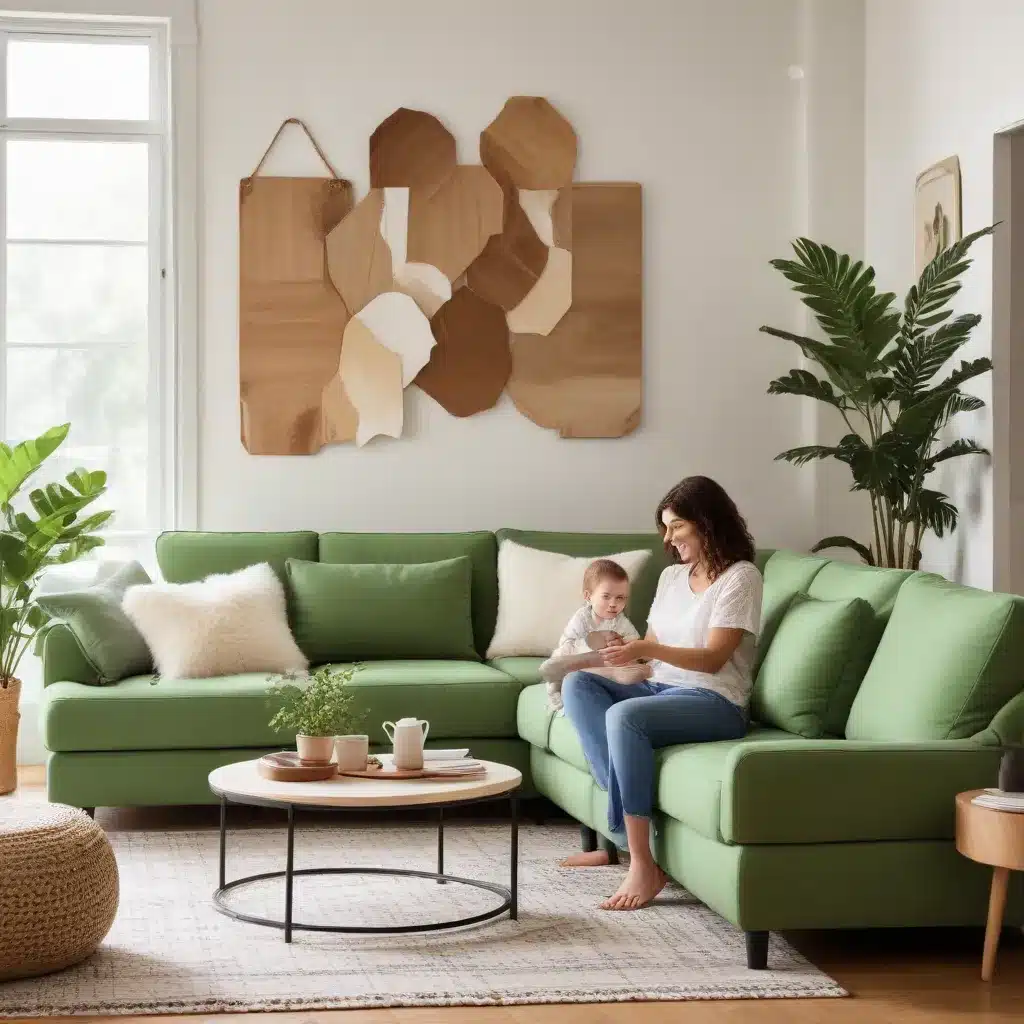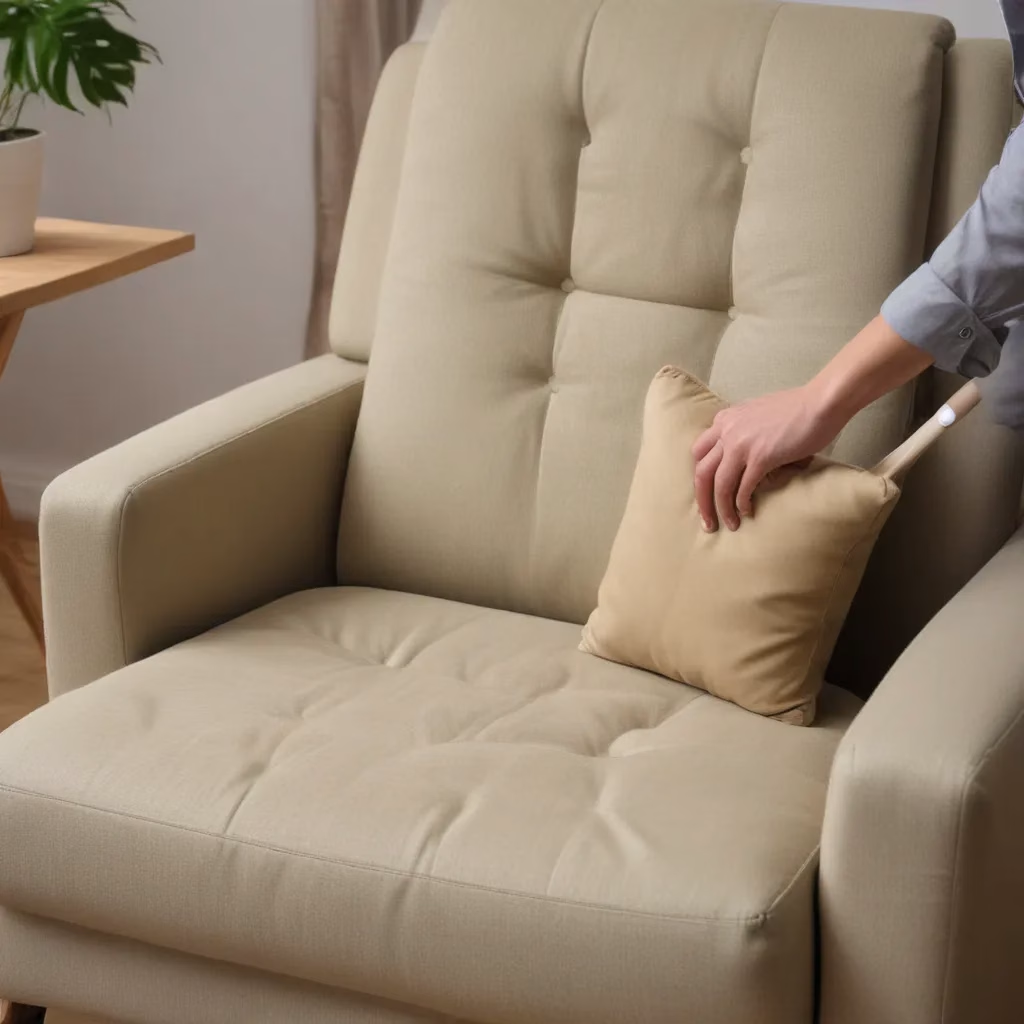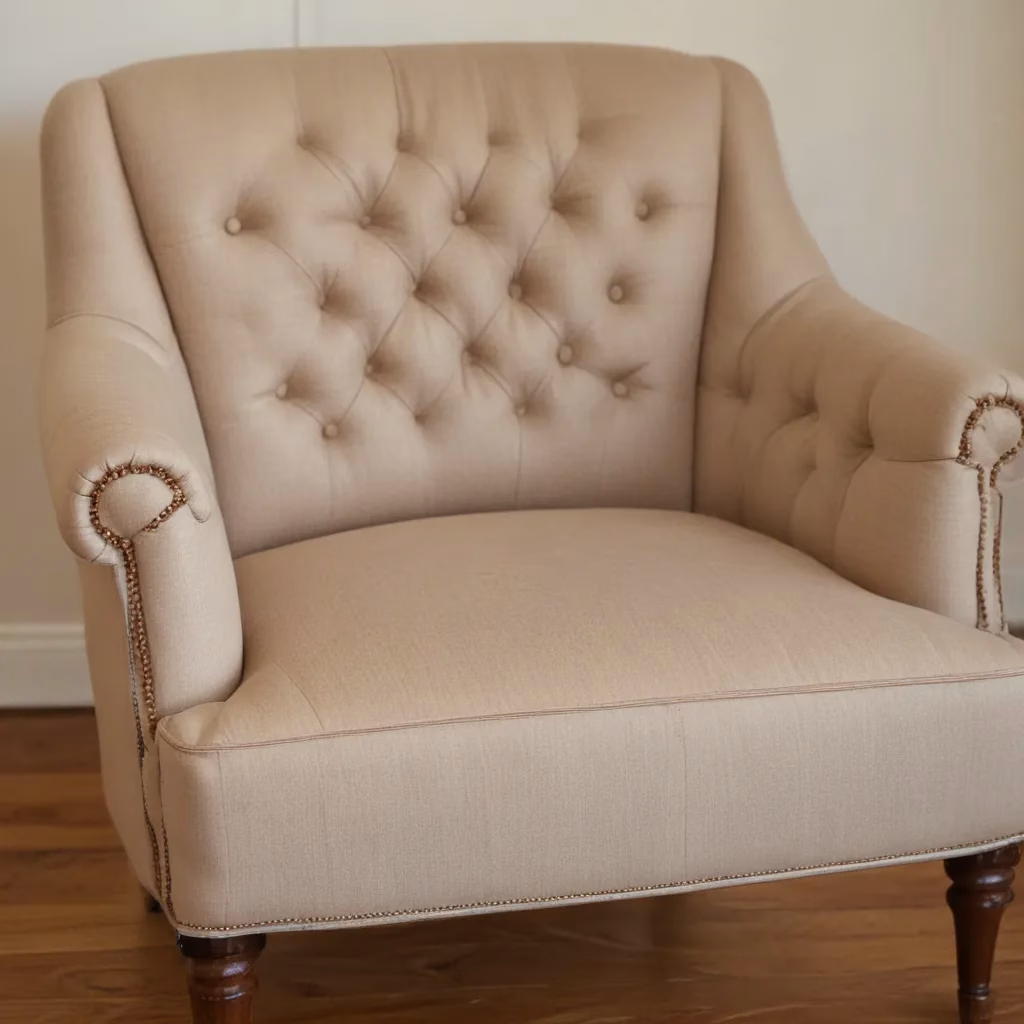
The Rise of Sustainable Furniture
As a furniture specialist with years of experience, I’ve witnessed a significant shift in consumer preferences towards sustainable and long-lasting furniture pieces. This trend isn’t just about following the latest fad; it’s a thoughtful approach to furnishing our homes with pieces that will stand the test of time and can be passed down through generations.
Eco-friendly furniture has come a long way from its humble beginnings. Gone are the days when sustainable meant sacrificing style or comfort. Today’s green furniture options are not only environmentally responsible but also stylish and durable. From sofas made with organic materials to tables crafted from reclaimed wood, the choices are vast and varied.
One of the most rewarding aspects of my job is helping families select pieces that will become part of their legacy. There’s something special about knowing that the sofa you’re choosing today might be the same one your grandchildren curl up on to read their favorite books. This longevity is at the heart of sustainable furniture design.
Choosing Materials That Last
When it comes to selecting eco-friendly furniture that can be passed down, the material is key. I always advise my clients to look for pieces made from solid, sustainably sourced wood. Hardwoods like oak, maple, and walnut are excellent choices for their durability and timeless appeal.
For upholstered pieces like sofas and armchairs, natural fabrics are the way to go. Organic cotton, wool, and linen are not only better for the environment but also tend to age beautifully. These materials develop a lovely patina over time, adding character to your furniture.
Here’s a quick comparison of some popular eco-friendly materials:
| Material | Durability | Eco-Friendliness | Maintenance |
|---|---|---|---|
| Solid Oak | High | High (if certified) | Low |
| Organic Cotton | Medium | High | Medium |
| Reclaimed Wood | High | Very High | Low |
| Bamboo | Medium-High | High | Low |
| Natural Latex | High | High | Low |
Remember, the goal is to choose materials that will look good and function well for decades. This approach not only reduces waste but also ensures that your investment in quality furniture pays off in the long run.
The Art of Upcycling and Restoration
One of the most exciting trends I’ve seen in recent years is the renewed interest in upcycling and restoring vintage pieces. This practice aligns perfectly with the goal of creating sustainable, heirloom-quality furniture. By giving new life to old pieces, we’re not only reducing waste but also preserving history.
I often encourage my clients to look for well-made vintage sofas or chairs that can be reupholstered. With a fresh fabric and some minor repairs, these pieces can become stunning focal points in a modern home. The key is to look for solid construction and classic lines that won’t go out of style.
Restoration isn’t limited to upholstered goods, either. Wooden furniture can often be refinished or repainted to suit contemporary tastes. I’ve seen stunning transformations where a tired old dresser becomes a statement piece with just a bit of sanding and a new coat of paint.
This approach to furniture allows families to create unique pieces that tell a story. Imagine passing down a dining table that not only witnessed countless family meals but also bears the marks of your personal touch in its restoration.
Designing Spaces with Longevity in Mind
When I work with clients on designing their living spaces, I always encourage them to think long-term. It’s not just about what looks good now, but what will continue to work for years to come. This approach naturally leads to more sustainable choices.
One strategy I often suggest is to focus on versatile, neutral pieces for large furniture items like sofas. A well-made sofa in a classic style and neutral color can adapt to changing tastes and decor trends. You can always update the look with throw pillows, blankets, or by changing the surrounding decor.
For those looking to add eco-friendly elements to their existing spaces, I recommend starting small. A side table made from reclaimed wood or a lamp with a base crafted from recycled materials can be great entry points into sustainable design.
It’s also worth considering the layout of your space. Furniture arrangements that promote conversation and comfort never go out of style. A thoughtfully designed living room that encourages family gatherings and relaxation will remain relevant regardless of passing trends.
Maintaining Your Heirloom Pieces
Selecting sustainable, high-quality furniture is only part of the equation. To truly create pieces that can be passed down through generations, proper maintenance is crucial. I always make sure to educate my clients on how to care for their furniture to ensure its longevity.
For wooden furniture, regular dusting and occasional polishing can go a long way. I recommend using natural, non-toxic cleaning products to protect both the furniture and your family’s health. For upholstered pieces, regular vacuuming and prompt attention to spills are key.
One often overlooked aspect of furniture maintenance is climate control. Extreme temperatures and humidity can wreak havoc on wood and fabrics alike. I advise keeping furniture away from direct sunlight and heat sources, and using a dehumidifier in damp areas if necessary.
Remember, small repairs made promptly can prevent larger issues down the line. A loose screw tightened or a small tear mended can add years to a piece’s lifespan. Don’t be afraid to seek professional help for more significant repairs or restorations.
The Future of Sustainable Furniture
As we look to the future, I’m excited about the innovations happening in sustainable furniture design. Advances in eco-friendly materials and manufacturing processes are making it easier than ever to create beautiful, durable pieces with a minimal environmental impact.
One trend I’m particularly enthusiastic about is the use of 3D printing in furniture production. This technology allows for precise, low-waste manufacturing and opens up new possibilities for customization. Imagine being able to create a piece of furniture tailored exactly to your space and needs, with minimal material waste.
Another area of innovation is in sustainable upholstery. New fabrics made from recycled plastics or innovative plant-based materials are providing more options for eco-conscious consumers. These materials often offer improved durability and stain resistance, making them perfect for family-friendly furniture.
As we continue to prioritize sustainability in our homes, I believe we’ll see a shift towards more modular and adaptable furniture designs. Pieces that can be easily repaired, updated, or reconfigured to suit changing needs will become increasingly popular.
Embracing Timeless Design
In my years of experience, I’ve come to appreciate the value of timeless design. While it’s tempting to follow every new trend, I always advise my clients to consider pieces that have stood the test of time. Classic designs not only remain relevant year after year but also tend to be more versatile, adapting easily to different decor styles.
When selecting furniture that you hope will become a family heirloom, look for clean lines and balanced proportions. These elements are the hallmarks of timeless design. A well-proportioned sofa or a simply elegant dining table will never look dated, regardless of changing fashion.
Color choice also plays a crucial role in creating timeless pieces. While bold colors can be exciting, they can also quickly feel outdated. I often recommend opting for neutral tones for large pieces of furniture. This doesn’t mean your space has to be boring – you can always add pops of color through accessories or accent pieces that are easier to update.
Remember, timeless doesn’t mean boring. Even classic designs can have unique details or craftsmanship that make them special. Look for pieces with subtle, thoughtful touches that add character without overwhelming the overall design.
The Role of Craftsmanship in Sustainable Furniture
One aspect of furniture that I always emphasize to my clients is the importance of craftsmanship. In our quest for sustainable, long-lasting furniture, the quality of construction is paramount. Well-crafted pieces not only last longer but often use materials more efficiently, reducing waste.
I’ve had the pleasure of working with many skilled artisans over the years, and their dedication to their craft is truly inspiring. Hand-crafted furniture often bears the unique mark of its maker, adding to its character and value. These pieces tell a story not just of your family, but of the skilled hands that created them.
When examining furniture, pay attention to the details. Look for tight, even joints, smooth finishes, and consistent coloration. In upholstered pieces, check the quality of the stitching and the evenness of the stuffing. These small details are indicators of the care and skill that went into creating the piece.
Investing in well-crafted furniture might seem more expensive upfront, but it’s an investment that pays off over time. These pieces require less frequent replacement and often increase in value, making them true heirlooms.
Creating a Sustainable Home Environment
As we think about passing down furniture to future generations, it’s important to consider the overall home environment we’re creating. Sustainable furniture is just one part of a larger picture of eco-friendly living.
I often advise my clients to think holistically about their home. This might include considering energy-efficient lighting to complement their sustainable furniture, or choosing low-VOC paints for a healthier indoor environment. Every choice we make in our homes has an impact, and these choices compound over time.
One strategy I love is incorporating plants into interior design. Not only do plants improve air quality, but they also create a connection to nature that enhances the longevity of your decor. A well-placed plant can soften the lines of furniture and create a timeless, natural aesthetic.
Remember, creating a sustainable home is a journey, not a destination. Start with quality, eco-friendly furniture pieces, and let your commitment to sustainability grow from there. Your choices today will shape the legacy you leave for future generations.
The Emotional Value of Heirloom Furniture
In my years of working with families to furnish their homes, I’ve come to appreciate the emotional value of furniture that’s passed down through generations. These pieces carry with them memories and stories that become part of a family’s history.
I remember one client who was redecorating her living room but insisted on keeping her grandmother’s old armchair. While it didn’t quite fit with her new decor scheme, the memories associated with that chair – of sitting on her grandmother’s lap for storytime – were priceless. We worked together to reupholster the chair, giving it new life while preserving its sentimental value.
When you choose furniture with the intention of passing it down, you’re not just selecting a functional item – you’re creating a future heirloom. Consider the memories that will be made around your dining table, or the comfort your sofa will provide through life’s ups and downs.
This emotional connection to furniture is something that can’t be replicated with mass-produced, disposable pieces. It’s a powerful argument for investing in quality, sustainable furniture that can stand the test of time.
Educating the Next Generation
As we think about creating furniture heirlooms, it’s crucial to educate younger generations about the value of sustainable, quality pieces. In a world of fast fashion and disposable goods, teaching children to appreciate craftsmanship and longevity can be a challenge, but it’s one worth undertaking.
I often encourage my clients to involve their children in the furniture selection process. Explaining why we choose certain materials or designs can help instill an appreciation for quality and sustainability from a young age. It’s about shifting the mindset from seeing furniture as merely functional to understanding its role in our homes and lives.
Consider creating a story around your furniture pieces. Share with your children the history of a particular item, or involve them in the care and maintenance of furniture. These experiences can create lasting connections and a sense of responsibility towards preserving these pieces for the future.
By fostering this appreciation in younger generations, we’re not just passing down furniture – we’re passing down values of sustainability, quality, and the importance of creating a thoughtful home environment.
Conclusion: A Legacy of Sustainable Living
As we wrap up our exploration of eco-friendly furniture and creating pieces to pass down, I’m reminded of why I fell in love with this field in the first place. Furniture is more than just functional objects – it’s the backdrop to our lives, the silent witness to our daily joys and struggles.
By choosing sustainable, high-quality pieces, we’re not just furnishing our homes – we’re creating a legacy. We’re making a statement about our values and our commitment to the environment. We’re crafting spaces that will nurture and inspire future generations.
Remember, creating furniture heirlooms is a journey. It’s about making thoughtful choices, investing in quality, and caring for your pieces over time. It’s about seeing the potential in older items and breathing new life into them. Most importantly, it’s about creating a home that reflects your values and tells your family’s unique story.
As you embark on your own journey of sustainable furnishing, I encourage you to take your time, do your research, and choose pieces that truly speak to you. And if you ever need guidance or inspiration, the team at Sofa Spectacular is always here to help you create a home that’s both beautiful and sustainable.
Here’s to creating homes filled with memories, sustainability, and furniture that will be cherished for generations to come.



